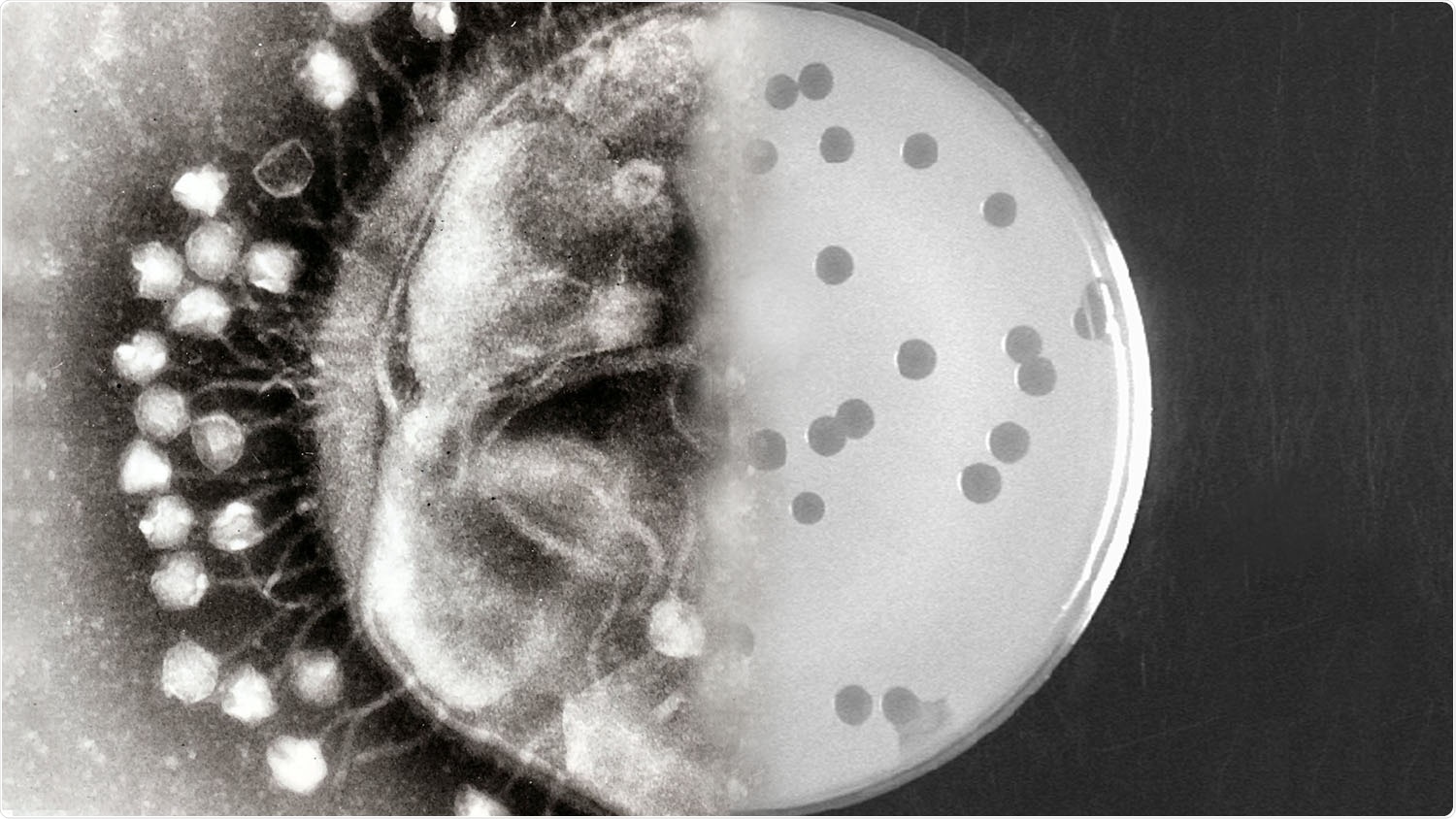A new procedure for controlling directed evolution in bacteria is developed and demonstrated by scientists at North Carolina State University. This technique could be employed to better program microorganisms for applications in chemical and biopharmaceutical manufacturing.

This image was created by combining two images: 'Phage' by Dr Graham Beards and 'Bxz2_Plaque' by Deborah Jacobs-Sera and Graham Hatfull. Shared under a Creative Commons Attribution-Share Alike 3.0 Unported license. Image Credit: North Carolina State University
Our technique allows users to modify 10 times more genes than previous techniques. Previous techniques for directed evolution allowed you to engineer up to three genes at a time. Our approach allows you to tweak up to 30 genes at a time. In addition, our approach is more amenable to automation than previous techniques, making the process significantly less difficult and time-consuming.”
Nathan Crook, Study Corresponding Author and Assistant Professor, Chemical and Biomolecular Engineering, NC State University
Inducible Directed Evolution (IDE), the new technique, differs from well-known directed evolution as it utilizes inducible lysogenic bacteriophages. Lysogenic bacteriophages are viruses that have the ability of living within a host bacterium for a prolonged time before reproducing and destroying the cell.
The scientists, particularly, employed inducible lysogenic bacteriophages, which will not reproduce and destroy the cell until they receive a specific signal. The signal, in this case, is the introduction of a particular monosaccharide, or simple sugar.
Other bacteriophages begin reproducing as soon as possible after being introduced into a cell. If you’re using those bacteriophages to introduce engineered DNA into the cell, this means you have very little time for those engineered mutations to cause an observable change in the cell’s behavior or in the products that the cell is producing.”
Nathan Crook, Study Corresponding Author and Assistant Professor, Chemical and Biomolecular Engineering, NC State University
Crook states, “By using inducible lysogenic bacteriophages, we can introduce a piece of engineered DNA into a cell and prevent the bacteriophage from reproducing right away. We can give the mutated DNA days or weeks to do its job before triggering the bacteriophage to reproduce.”
“That gives us significantly more time for the engineered mutations to make changes in the cell’s behavior or to make the cell churn out whatever products we’re trying to create,” Crook added.
The scientists altered a strain of E. Coli to demonstrate IDE’s effectiveness. They engineered the bacteria, specifically, to effectively ingest a carbon source that E. Coli usually has trouble breaking down.
Our demonstration shows that IDE is capable of making finely tuned changes to a bacterium. And we chose E. Coli because it is already widely used by industry to create biopharmaceuticals and other chemicals. What’s more, we think E. Coli holds promise as a designer probiotic, and we think IDE could help fulfil that promise.”
Nathan Crook, Study Corresponding Author and Assistant Professor, Chemical and Biomolecular Engineering, NC State University
Source:
Journal reference:
Al’Abri, I. S., et al. (2022) Inducible directed evolution of complex phenotypes in bacteria. Nucleic Acids Research. doi.org/10.1093/nar/gkac094.